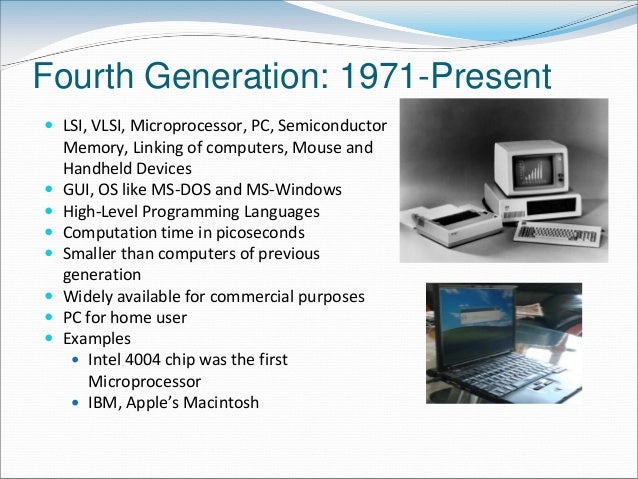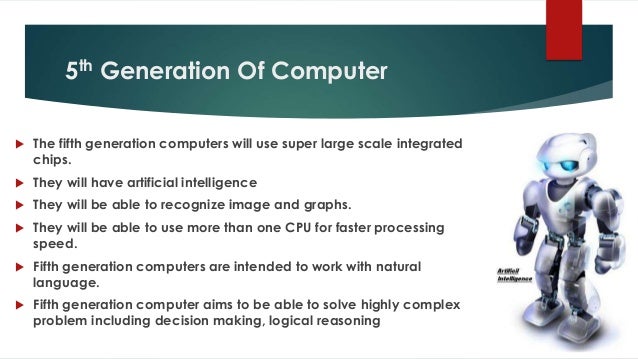A computer is a general
purpose device that can be programmed to carry out a set of
arithmetic or logical operations automatically. Computers are used for word
processing, pictures, music, videos, games, research, internet, programming,
accounting (business), just about anything and everything nowadays.
2400 BC
2400 BC
The First Computer: ABACUS
http://www.buzzle.com
Abacus is a device which used for simple operations.
It works with beads on it. People do their operations with beads. Chinese
invented it around 2400BC but some people claimed that it is Babylonians
invent. It came to America and Europe through oversea commerce merchants. It is
ancestor of computers.
1600s
- present
CALCULATOR
Firstly calculators used for four operations
and then they were improved and they used for all mathematical operations.
Actually, first calculators were abacuses. Wilhelm Schickard invented
a calculator which could do four operations, for the first time in 1623.
It used for astronomy, cartography and mathematical operations.
After around twenty years, French philosopher Blaise Pascal designed a calculator in 1645. Also, Gottfried
Wilhelm Leibniz invented
a calculator in 1671. They were all different and they didn't use
widespreadly. After a century, Charles Xavier Thomas invented a calculator called
Aritmometer which used for square root and four operations and it has used
until 1970s. Finally, electronic calculators were invented and they reached
today.
1613
Etymology
The first use of the word
“computer” was recorded in 1613 in a book called “The yong mans gleanings” by English writer Richard
Braithwait I haue read the truest computer of Times, and the best Arithmetician that
euer breathed, and he reduceth thy dayes into a short number. It referred to a person who carried out calculations, or computations,
and the word continued with the same meaning until the middle of the 20th
century. From the end of the 19th century the word began to take on its more
familiar meaning, a machine that carries out computations.
1940S
- 1950S
FIRST
GENERATION COMPUTERS
http://www.buzzle.com

http://www.buzzle.com
First electronic
computers used vacuum tubes, and they were huge and complex. The first general
purpose electronic computer was the ENIAC (Electronic Numerical Integrator And
Computer). It was digital, although it didn’t operate with binary code, and was
reprogrammable to solve a complete range of computing problems. It was
programmed using plugboards and switches, supporting input from an IBM card
reader, and output to an IBM card punch. It took up 167 square meters, weighed
27 tons, and consuming 150 kilowatts of power. It used thousands of vacuum
tubes, crystal diodes, relays, resistors, and capacitors.
1955S - 1960S
SECOND GENERATION COMPUTERS

The second generation of
computers came about thanks to the invention of the transistor, which then
started replacing vacuum tubes in computer design. Transistor computers
consumed far less power, produced far less heat, and were much smaller compared
to the first generation, albeit still big by today’s standards.
The first transistor computer was created at the University of
Manchester in 1953. The most popular of transistor computers was IBM 1401. IBM
also created the first disk drive in 1956, the IBM 350 RAMAC.
1960S
THIRD GENERATION COMPUTERS
http://www.buzzle.com

http://www.buzzle.com
The invention of the integrated
circuits (ICs), also known as microchips, paved the way for computers as we
know them today. Making circuits out of single pieces of silicon, which is a
semiconductor, allowed them to be much smaller and more practical to produce.
This also started the ongoing process of integrating an ever larger number of
transistors onto a single microchip. During the sixties microchips started
making their way into computers, but the process was gradual, and second
generation of computers still held on.
First appeared minicomputers, first of which were still based on
non-microchip transistors, and later versions of which were hybrids, being
based on both transistors and microchips, such as IBM’s System/360. They were
much smaller, and cheaper than first and second generation of computers, also
known as mainframes. Minicomputers can be seen as a bridge between mainframes
and microcomputers, which came later as the proliferation of microchips in
computers grew.
1971 – PRESENT
FOURTH GENERATION COMPUTERS
http://www.buzzle.com/

http://www.buzzle.com/
First microchips-based central processing units
consisted of multiple microchips for different CPU components. The drive for
ever greater integration and miniaturization led towards single-chip CPUs,
where all of the necessary CPU components were put onto a single microchip,
called a microprocessor. The first single-chip CPU, or a microprocessor, was
Intel 4004.
The
advent of the microprocessor spawned the evolution of the microcomputers, the
kind that would eventually become personal computers that we are familiar with
today.
FIFTH GENERATION COMPUTERS




No comments:
Post a Comment